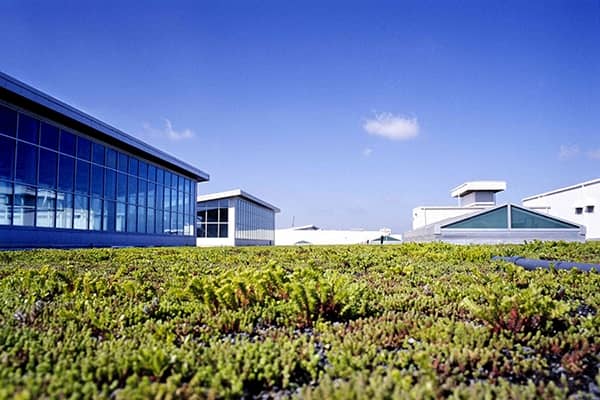Why We’re Installing a Green Roof
If you’ve wandered through the upper level of the new science complex, you’ve probably noticed the flat, dingy roof of the circle classroom. It looks like an unfinished project, something forgotten by the construction workers back in July. In reality, though, that space is full of potential.
Even if you aren’t familiar with gardening, you may have heard the term “green roof.” A green roof is exactly what it sounds like: a roof designed to grow certain plants. Far beyond adding an element of beauty to architecture, green roofs are innovative on many levels – not to mention growing in popularity.
As of 2013, the city of Chicago has over 500 green roofs encompassing more than five million square feet. Just a few years ago, Ford’s truck assembly plant in Dearborn, Mich., installed a green roof that covers 10.4 acres and weighs 15 pounds per square foot soaking wet.
Three Major Benefits
It’s great that other companies are installing green roofs, but why does the Lilly Center plan to put one on the circle classroom?
First, green roofs collect and filter stormwater. Before rain runs directly into the lakes, the plants in a green roof help remove any pollutants. (As a bonus, a green roof will never need to be watered with a hose!)
Second, green roofs will help keep the science complex warmer in the winter and cooler in the summer. Ford’s facility found that their green roof became a natural form of insulation, saving them up to five percent on heating and cooling costs each year.
Third, green roofs don’t contribute to the heat produced by tarred and paved surface. They trap airborne dust and dirt before anyone breathes it in, effectively making the air cleaner.
We hope to install the science complex’s green roof within the next year. Follow us on Facebook to catch every update!
